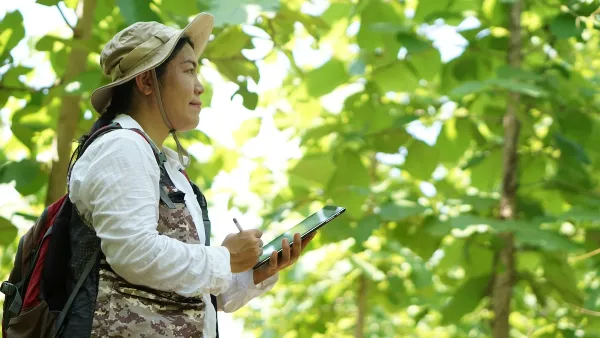According to a newly released study by the World Wildlife Fund, the Zoological Society of London, and other NGOs, the world has lost half of its biodiversity, particularly in fresh water ecosystems and in developing nations.
Gautam Naik, science reporter for The Wall Street Journal, calls it "the most comprehensive study of animal populations to date." He notes that the World Wildlife Fund (WWF) has been compiling its biennial Living Planet Index, a measure of biodiversity, since 1998.`
The fastest declines were seen in rivers and other freshwaters systems, where populations fell 76% since 1970. By comparison, terrestrial and marine populations each fell 39%.
Major contributors to the loss of biodiversity include "increased habitat destruction (and) commercial fishing and hunting," writes Naik. "Climate change also is believed to be a factor, though its consequences are harder to measure." he adds.
The most dramatic decline was in Latin America, where overall populations of mammals, birds, reptiles, amphibians and fish fell 83%. Asia-Pacific wasn't far behind.
According to WWF's press release on the Living Planet Report, the "biodiversity loss occurs disproportionately in low-income countries—and correlates with the increasing resource use of high-income countries."
Along the lines of resource consumption, Naik adds that "(t)he report calculates a global 'ecological footprint,' which measures the area required to supply the ecological goods and services humans use."
In his WWF blog, Jon Hoekstra writes that "(t)he report is always a must read update on the state of the planet, but this edition is especially important for anyone who cares about biodiversity."
The report can be accessed here.
[Access to WSJ article will be available to non-subscribers for up to seven days after Oct. 6]
FULL STORY: Wildlife numbers drop by half since 1970, report says

Analysis: Cybertruck Fatality Rate Far Exceeds That of Ford Pinto
The Tesla Cybertruck was recalled seven times last year.

National Parks Layoffs Will Cause Communities to Lose Billions
Thousands of essential park workers were laid off this week, just before the busy spring break season.

Retro-silient?: America’s First “Eco-burb,” The Woodlands Turns 50
A master-planned community north of Houston offers lessons on green infrastructure and resilient design, but falls short of its founder’s lofty affordability and walkability goals.

Test News Post 1
This is a summary

Analysis: Cybertruck Fatality Rate Far Exceeds That of Ford Pinto
The Tesla Cybertruck was recalled seven times last year.

Test News Headline 46
Test for the image on the front page.
Urban Design for Planners 1: Software Tools
This six-course series explores essential urban design concepts using open source software and equips planners with the tools they need to participate fully in the urban design process.
Planning for Universal Design
Learn the tools for implementing Universal Design in planning regulations.
EMC Planning Group, Inc.
Planetizen
Planetizen
Mpact (formerly Rail~Volution)
Great Falls Development Authority, Inc.
HUDs Office of Policy Development and Research
NYU Wagner Graduate School of Public Service




























